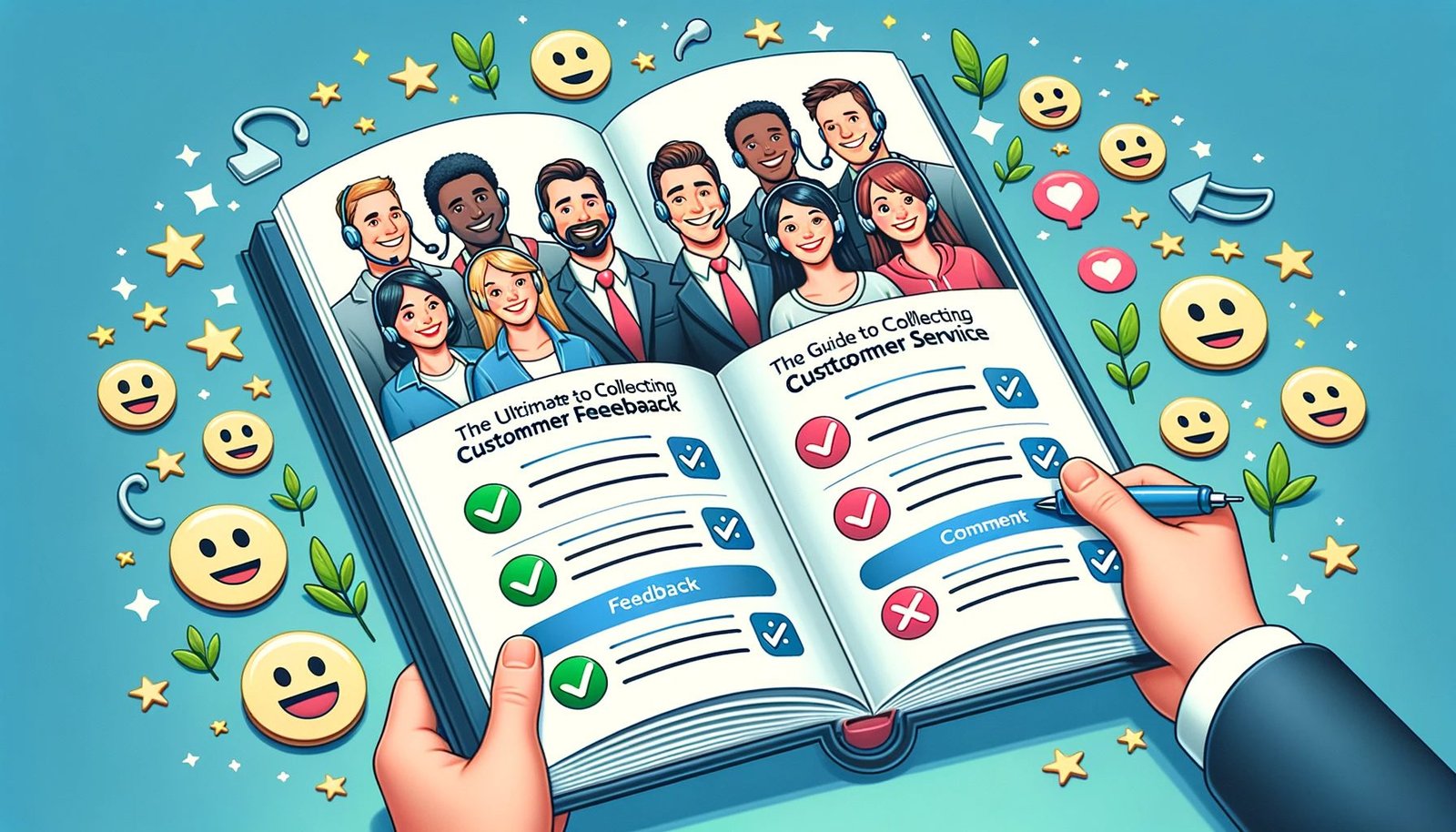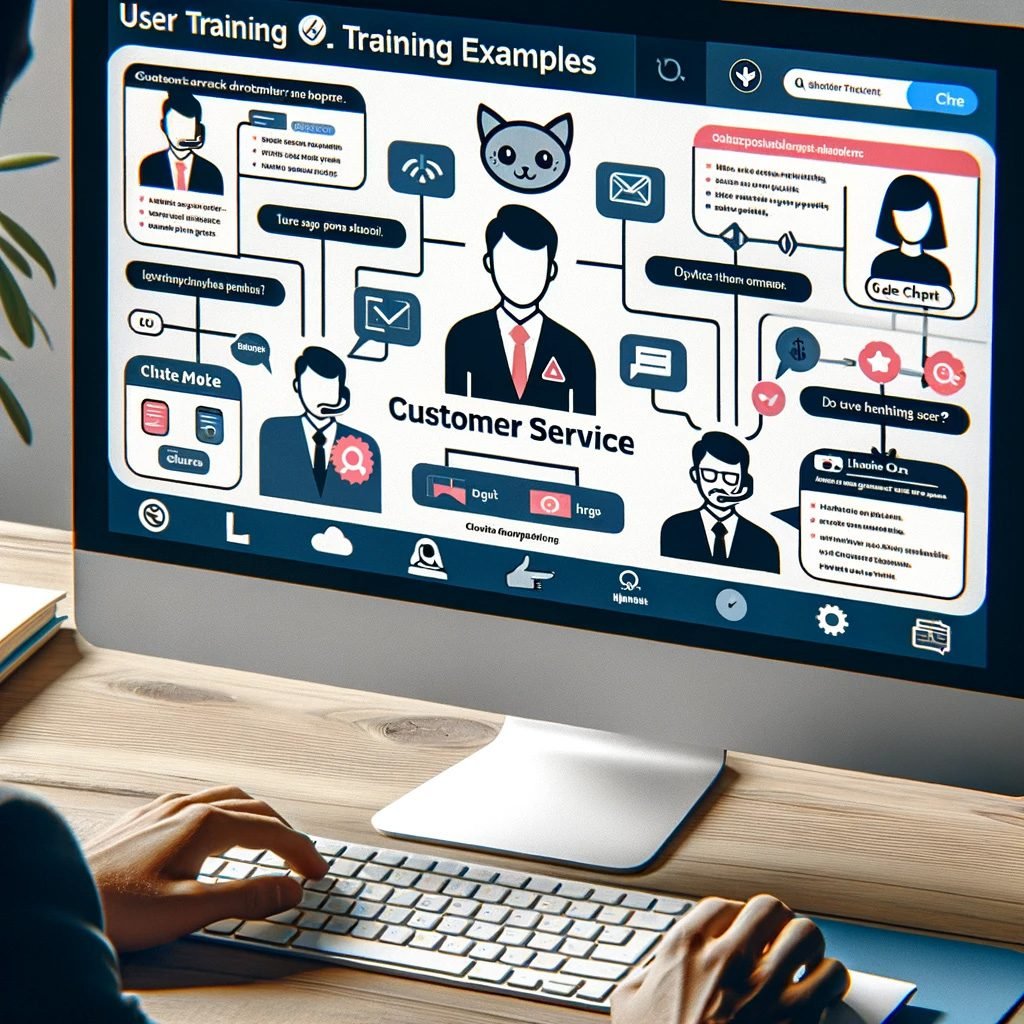10 Tips for Monitoring Your ChatGPT Chatbot and Improving Customer Satisfaction
10 Tips for Monitoring Your ChatGPT Chatbot and Improving Customer Satisfaction
Introduction – ChatGPT Chatbot and Improving Customer Satisfaction
In recent years, the integration of AI chatbots in customer service has seen a meteoric rise. These chatbots, especially the likes of ChatGPT, have transformed the way businesses interact with their customers. However, as with any technology, it’s crucial to monitor and refine these AI systems to ensure they deliver optimal customer satisfaction. In this article, we’ll delve into the significance of keeping a close eye on your ChatGPT and provide a comprehensive guide on how to do so effectively.
The Rise of AI Chatbots in Customer Service
The digital age has ushered in a new era where instant communication is not just preferred but expected. AI chatbots, like ChatGPT, have become the frontrunners in meeting these expectations. They offer 24/7 support, instant responses, and can handle a multitude of queries simultaneously. This not only enhances the user experience but also reduces operational costs for businesses.
The Importance of Monitoring ChatGPT
While AI chatbots are a boon, they’re not infallible. There can be instances where they might not understand a query or provide an incorrect response. This is where monitoring comes into play. By keeping a close watch on ChatGPT’s interactions, businesses can identify areas of improvement, ensuring that the chatbot evolves and aligns better with customer needs.
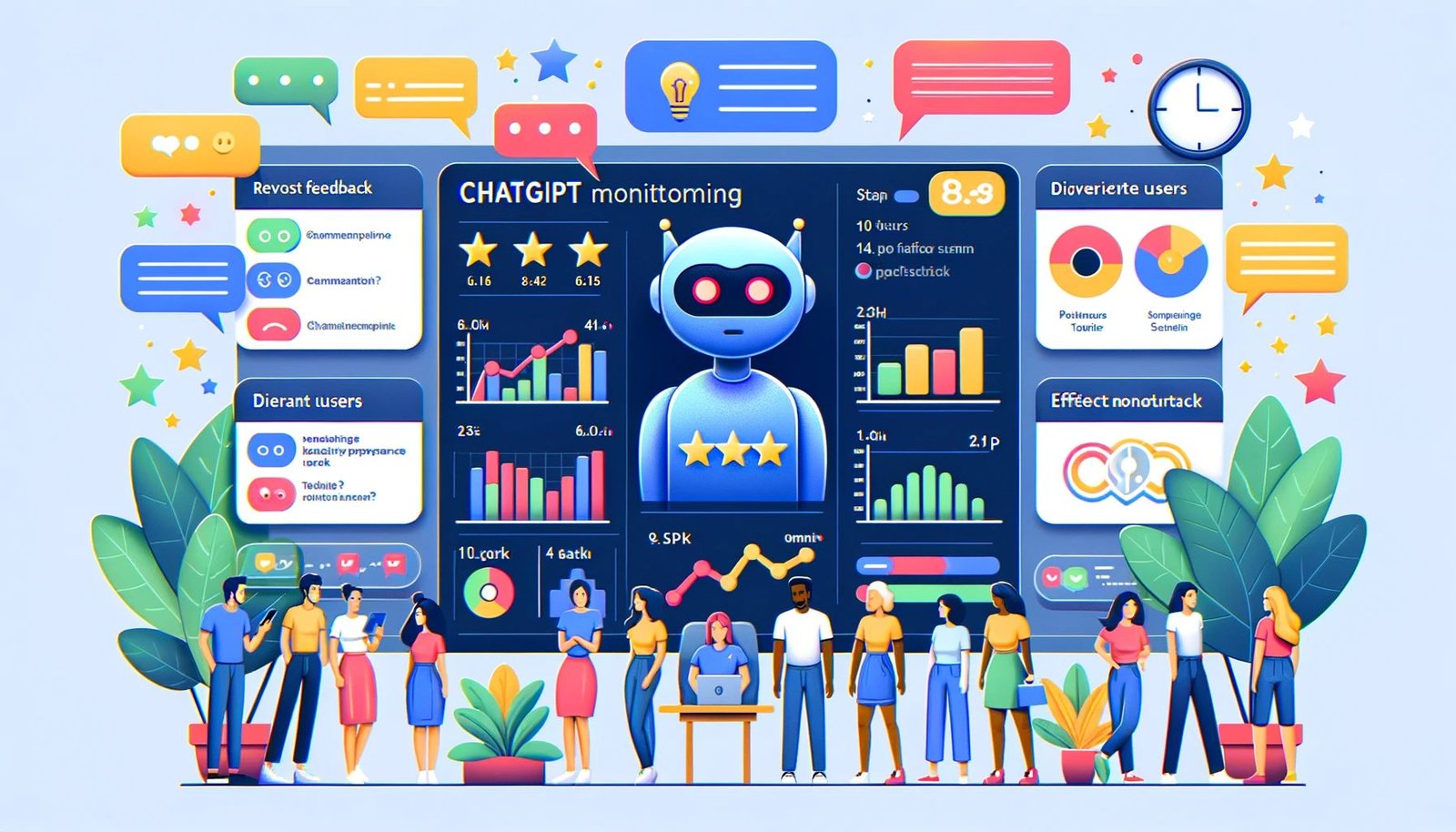
The Ultimate Guide to Monitoring Your ChatGPT Chatbot
In today’s digital age, AI chatbots like ChatGPT have become an integral part of customer service. They offer instant responses, are available 24/7, and can handle multiple queries simultaneously. However, to ensure that these chatbots consistently deliver optimal performance, monitoring them becomes crucial. Let’s delve deeper into the world of ChatGPT monitoring.
a. Why Monitoring Matters: The Impact on Customer Service and Satisfaction
Monitoring your ChatGPT chatbot is not just a technical necessity; it’s a strategic move to enhance customer service. Here’s why it’s essential:
- Continuous Improvement: By monitoring, you can identify areas where the chatbot might be lacking or misinterpreting user queries. This allows for continuous refinement and improvement.
- Customer Trust: A well-monitored chatbot ensures that customer queries are addressed accurately. This builds trust as customers feel they are being understood and valued.
- Efficiency: Monitoring helps in identifying recurring issues or questions. Addressing these can make the chatbot more efficient, reducing the need for human intervention.
- Feedback Loop: Monitoring provides direct feedback on how the chatbot is performing, which can be invaluable for future training and updates.
b. Tools and Platforms: Best Tools for Effective ChatGPT Monitoring
There are several tools available that can aid in the effective monitoring of ChatGPT:
- Chatbot Analytics Platforms: Tools like Botanalytics or Dashbot provide insights into user interactions, engagement metrics, and more.
- Feedback Collection Tools: Platforms like Typeform or SurveyMonkey can be integrated post-chat to gather user feedback.
- In-built Monitoring Tools: Many chatbot platforms come with in-built analytics and monitoring tools that provide real-time data on chatbot performance.
c. Key Metrics to Track: Understanding Performance, Quality, and Security
When monitoring ChatGPT, it’s essential to know which metrics to focus on. Here are some key ones:
- Response Time: Measures how quickly the chatbot responds to user queries. A lower response time enhances user experience.
- Resolution Rate: The percentage of user queries that the chatbot resolves without human intervention.
- User Satisfaction: Gathered through post-chat surveys, this metric provides insights into how satisfied users are with the chatbot’s responses.
- Misunderstood Queries: Tracks instances where the chatbot couldn’t understand or misinterpreted a user’s query. This metric is crucial for training and refinement.
- Security Metrics: It’s essential to monitor for any potential security breaches or vulnerabilities, especially if the chatbot handles sensitive information.
Monitoring your ChatGPT chatbot is crucial for ensuring optimal performance, enhancing customer satisfaction, and continuously improving the system. With the right tools and a focus on key metrics, businesses can harness the full potential of ChatGPT, offering users a seamless and efficient customer service experience.
10 Tips for Monitoring Your ChatGPT Chatbot
In today’s digital age, chatbots have become an integral part of customer service. They offer instant responses, are available 24/7, and can handle multiple queries simultaneously. However, to ensure that your ChatGPT chatbot meets user expectations and delivers optimal performance, monitoring is essential. Here are ten tips to effectively monitor your ChatGPT chatbot and ensure it remains a valuable asset in your customer service toolkit.
a. Real-time Monitoring: Catching issues as they arise.
In the fast-paced world of customer service, it’s crucial to address issues immediately. By implementing real-time monitoring for your ChatGPT chatbot, you can identify and rectify problems as they occur, ensuring a smooth experience for users. This not only enhances user satisfaction but also reduces the chances of negative feedback.
b. Feedback Collection: Gathering direct user feedback post-interaction.
Feedback is the cornerstone of improvement. By integrating feedback collection mechanisms like surveys or quick rating systems post-chat, you can gain invaluable insights into user satisfaction and areas of potential enhancement. Direct feedback can highlight both the strengths and weaknesses of your ChatGPT chatbot.
c. Analyzing Chat Logs: Gleaning insights from direct conversations.
Chat logs are a goldmine of information. Regularly reviewing and analyzing these logs can provide insights into common user queries, chatbot response accuracy, and areas where the chatbot might be falling short. This data-driven approach can guide your optimization efforts.
d. Setting Alerts: Being proactive about potential issues.
Instead of waiting for a problem to escalate, set up automated alerts for specific triggers. This could be a repeated unrecognized query, a drop in user satisfaction scores, or any unusual activity. Being alerted in real-time allows for swift interventions, maintaining a high-quality user experience.
e. Regularly Updating the Model: Ensuring ChatGPT is always at its best.
AI models, including ChatGPT, thrive on continuous learning. Regularly updating the model with new data, feedback, and insights ensures that it remains effective, relevant, and efficient in handling user queries.
f. Security Checks: Protecting user data and ensuring safe interactions.
In today’s digital age, security is paramount. Regular security audits, data encryption, and ensuring GDPR compliance are essential to protect user data. A secure chatbot not only safeguards sensitive information but also builds trust with users.
g. Performance Benchmarks: Setting and measuring against KPIs.
What gets measured gets improved. Establish clear KPIs for your ChatGPT chatbot, such as user satisfaction scores, resolution rates, and engagement levels. Regularly measuring against these benchmarks can guide your enhancement strategies.
h. User Journey Mapping: Understanding and optimizing the user experience.
Mapping out the typical user journey can provide insights into potential friction points, drop-offs, or areas of confusion. By understanding this journey, you can tailor the chatbot experience to be more intuitive and user-friendly.
i. A/B Testing: Experimenting with different responses to optimize satisfaction.
Not all chatbot responses are created equal. By A/B testing different phrasings, response structures, or even chatbot personalities, you can determine which variants resonate most with users, leading to higher satisfaction and engagement.
j. Integrating with Other Tools: Combining insights from various platforms.
Your ChatGPT chatbot doesn’t operate in a vacuum. Integrate it with other tools like CRM systems, analytics platforms, or feedback collection tools. This holistic approach provides a 360-degree view of user interactions, leading to more informed decision-making.
By implementing these tips, you can ensure that your ChatGPT chatbot remains an effective, efficient, and valued tool in your customer service arsenal.
Your Secret Weapon for Exceptional Customer Service
In the age of digital transformation, businesses are constantly seeking ways to enhance their customer service. With the rise of AI and chatbots, companies now have the opportunity to provide real-time, personalized responses to customer queries. But what truly sets a business apart is its ability to proactively monitor, learn from feedback, and personalize the user experience. Here’s how ChatGPT can be your secret weapon in delivering exceptional customer service.
a. The Power of Proactive Monitoring: Anticipating issues before they escalate.
One of the major advantages of using ChatGPT is its ability to monitor interactions in real-time. This proactive approach allows businesses to identify potential issues or misunderstandings before they escalate into bigger problems. By catching these early, businesses can ensure smoother interactions, leading to increased customer satisfaction. For instance, if a customer is repeatedly asking the same question or expressing confusion, the system can flag this for immediate attention, allowing for timely intervention.
b. The Role of Continuous Learning: Adapting ChatGPT based on feedback.
Feedback is a goldmine of information. Every interaction with a customer provides insights into their needs, preferences, and pain points. By continuously collecting and analyzing this feedback, businesses can train and adapt ChatGPT to better serve their customers. This iterative process ensures that the chatbot remains relevant, up-to-date, and aligned with customer expectations. For example, if customers frequently ask about a new product feature, the chatbot can be updated to provide detailed information about it, ensuring that users get the answers they need without delay.
c. Enhancing Personalization: Tailoring responses for individual users.
In today’s digital age, customers expect personalized experiences. They want to feel valued and understood. ChatGPT offers the capability to tailor responses based on individual user profiles, interaction history, and preferences. By leveraging this feature, businesses can provide responses that resonate with the user, fostering a deeper connection and enhancing the overall customer experience. Whether it’s greeting a returning customer by name or offering product recommendations based on past purchases, these personalized touches can make a world of difference in building loyalty and trust.
By harnessing the power of proactive monitoring, continuous learning, and enhanced personalization, ChatGPT can truly be your secret weapon in delivering exceptional customer service. Embrace these capabilities, and watch your customer satisfaction soar.
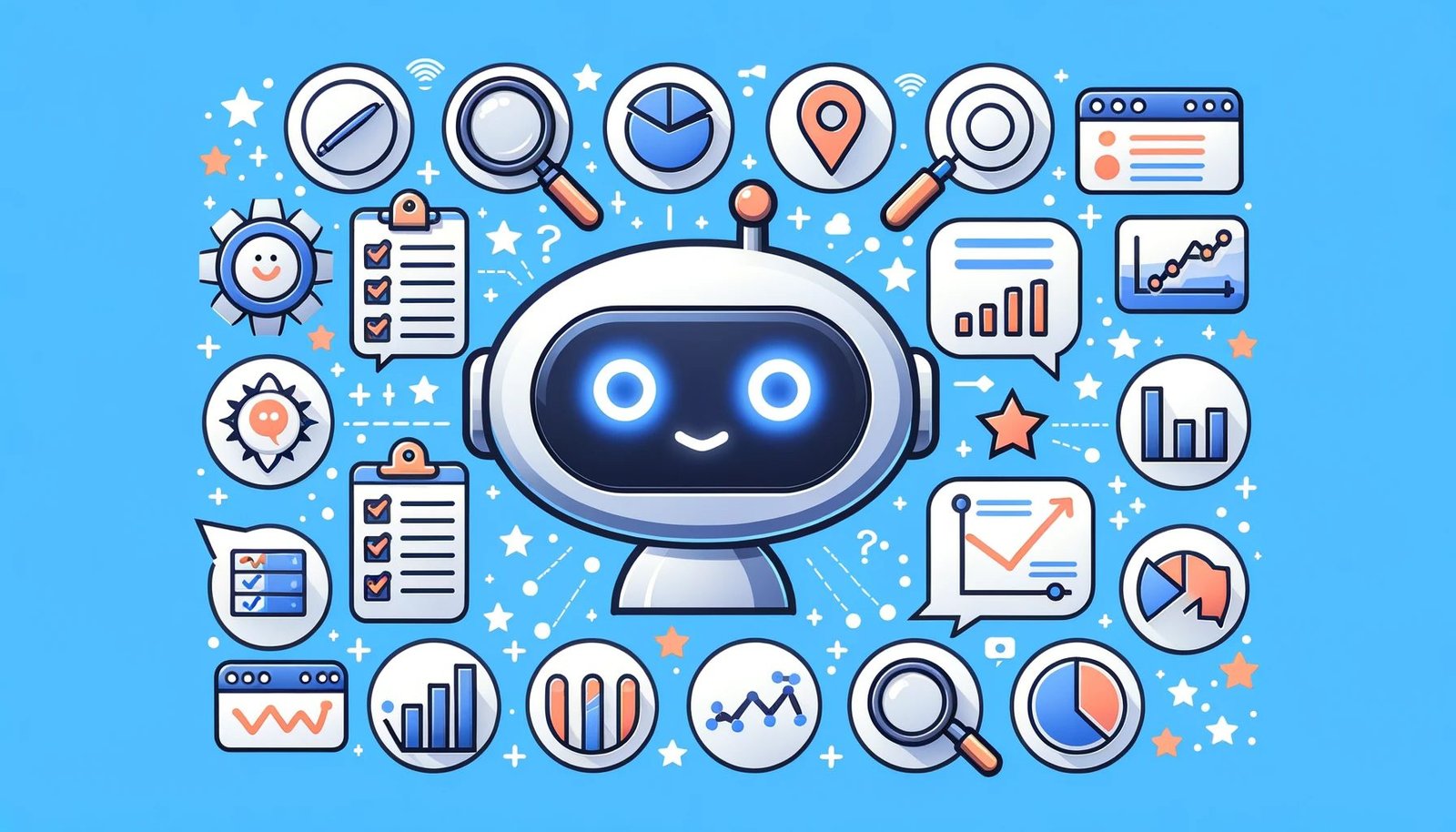
How to Use ChatGPT Monitoring to Improve Customer Support ROI
In the competitive landscape of business, every organization is on the lookout for strategies that can enhance their return on investment (ROI). When it comes to customer support, the integration of AI-driven solutions like ChatGPT can be a game-changer. By effectively monitoring and leveraging ChatGPT, businesses can not only improve their customer support but also witness a significant boost in their ROI. Here’s how:
a. Cost Savings: Reducing the need for human intervention.
One of the primary benefits of utilizing ChatGPT in customer support is the substantial cost savings it offers. With ChatGPT efficiently handling a bulk of customer queries, there’s a reduced need for human agents to manage routine and repetitive questions. This means businesses can allocate their human resources to more complex tasks that require a personal touch, thereby optimizing workforce productivity. Additionally, with fewer errors and faster response times, there’s a decrease in the costs associated with rectifying mistakes or handling customer complaints. Over time, these savings can accumulate, leading to a noticeable improvement in the ROI of the customer support department.
b. Increased Customer Retention: Offering timely and accurate support.
Customer retention is crucial for any business’s long-term success. By monitoring ChatGPT and ensuring it provides timely, accurate, and relevant responses, businesses can significantly enhance the customer experience. A satisfied customer is more likely to return and engage with the brand, leading to repeat business. Moreover, positive experiences can result in word-of-mouth referrals, further boosting the customer base. By providing consistent and high-quality support through ChatGPT, businesses can foster loyalty, reduce churn, and subsequently, increase their ROI.
c. Upselling and Cross-Selling: Leveraging ChatGPT for sales opportunities.
Beyond just support, ChatGPT can be a valuable tool for sales. By analyzing customer queries and interaction history, ChatGPT can identify potential upselling or cross-selling opportunities. For instance, if a customer inquires about a specific product, ChatGPT can recommend complementary products or services, thereby increasing the potential for additional sales. Furthermore, by promoting special offers, discounts, or new product launches in relevant conversations, ChatGPT can drive revenue. When effectively utilized, these sales strategies can lead to increased average transaction values and, in turn, a higher customer support ROI.
In essence, by strategically monitoring and leveraging ChatGPT in customer support, businesses can witness a multitude of benefits that directly impact their ROI. From cost savings and enhanced customer retention to seizing sales opportunities, the potential for growth is immense. Embracing these strategies will ensure that businesses stay ahead of the curve and continue to deliver unparalleled value to their customers.
Unlocking Your Chatbot’s Full Potential
In today’s digital age, chatbots, especially sophisticated ones like ChatGPT, have become an integral part of customer support. They offer instant responses, are available round the clock, and can handle multiple queries simultaneously. However, to truly harness the power of these AI-driven chatbots, businesses need to go beyond basic functionalities. Here’s how you can unlock your chatbot’s full potential:
a. Advanced Analytics: Delving deeper into user interactions.
To truly understand your customers, you need to dive deep into the data. Advanced analytics tools can provide insights into how users interact with your chatbot. By analyzing metrics like response time, user satisfaction scores, and frequently asked questions, businesses can identify areas of improvement. Moreover, sentiment analysis can gauge the mood of the conversation, helping businesses understand customer emotions and adjust ChatGPT’s responses accordingly. These insights not only enhance the user experience but also provide valuable data for business strategies and product improvements.
b. Integrating with CRM: Offering personalized support based on user history.
A chatbot that knows its user can offer a far superior experience. By integrating ChatGPT with your CRM system, the chatbot can access user history, previous interactions, purchase records, and more. This means when a returning customer interacts with the chatbot, they receive personalized responses based on their history. For instance, if a user previously inquired about a specific product, the chatbot can follow up on that during the next interaction, offering discounts or providing updates. This level of personalization enhances user satisfaction and can lead to increased sales and loyalty.
c. AI and Human Collaboration: When to escalate to human agents.
While ChatGPT and other AI-driven chatbots are incredibly advanced, there are times when human intervention becomes necessary. Recognizing these moments is crucial. By monitoring interactions and identifying triggers (like user frustration or specific keywords), ChatGPT can seamlessly escalate the conversation to a human agent. This hybrid approach ensures that users get the best of both worlds: the efficiency of AI and the empathy of a human. Moreover, post-interaction, human agents can provide feedback on the chatbot’s performance, leading to continuous improvement and refinement of the AI system.
While having a chatbot like ChatGPT is a significant advantage, truly unlocking its potential requires a strategic approach. By delving into analytics, integrating with other systems, and ensuring a seamless AI-human collaboration, businesses can offer unparalleled customer support, driving satisfaction and loyalty to new heights.
ChatGPT Monitoring Best Practices for All Business Sizes
In the realm of customer support, AI-driven chatbots like ChatGPT have emerged as game-changers. Their ability to provide instant, round-the-clock support has made them indispensable. However, the approach to monitoring and optimizing these chatbots can vary based on the size and scale of a business. Here’s a tailored guide to ChatGPT monitoring best practices for businesses of all sizes:
a. For Startups: Quick wins and setting the foundation.
Startups, often operating with limited resources, need to focus on quick wins that deliver immediate value.
- Immediate Feedback Loop: Encourage users to provide feedback after each interaction. This real-time data can help in quickly identifying and rectifying issues.
- Set Clear Objectives: Determine what you want ChatGPT to achieve, be it lead generation, customer support, or sales. Tailor its responses accordingly.
- Regular Training: Use the initial months to continuously train ChatGPT with new queries and responses, setting a strong foundation for the future.
- Integration with Key Systems: Even if you’re using basic tools, ensure ChatGPT is integrated with your CRM or sales platform to provide context-driven support.
b. For SMEs: Scaling support without compromising quality.
As Small and Medium-sized Enterprises (SMEs) grow, the volume of customer interactions increases. The challenge is to scale without diluting the quality of support.
- Automated Reporting: Implement weekly or monthly automated reports to analyze ChatGPT’s performance metrics and identify areas of improvement.
- Segmented Support: Categorize user queries and train ChatGPT to handle specific segments, ensuring more accurate and tailored responses.
- Feedback Mechanism: Beyond just collecting feedback, implement a system to act on it. Regularly update ChatGPT’s knowledge base based on user feedback.
- Human-AI Collaboration: Ensure a seamless transition between ChatGPT and human agents for complex queries, enhancing user satisfaction.
c. For Enterprises: Advanced strategies and integrations.
Enterprises, with their vast customer base and complex operations, require advanced strategies to harness the full potential of ChatGPT.
- Deep Integration: Integrate ChatGPT with all customer-facing platforms, from websites to mobile apps, ensuring consistent support across channels.
- Advanced Analytics: Use AI-driven analytics tools to derive insights from vast amounts of chat data, predicting trends and optimizing responses.
- Personalization at Scale: With access to vast user data, train ChatGPT to offer hyper-personalized responses, enhancing user engagement.
- Security and Compliance: Ensure that ChatGPT adheres to industry-specific compliance standards and has robust security mechanisms to protect user data.
While ChatGPT offers a plethora of benefits across the board, the approach to monitoring and optimization should be tailored to the business’s size and needs. By adopting these best practices, companies can ensure that their chatbot not only meets but exceeds customer expectations.
Identifying and Solving Customer Issues Quickly
In today’s fast-paced digital landscape, customers expect immediate solutions to their problems. With AI-driven chatbots like ChatGPT, businesses have a powerful tool at their disposal to meet these expectations. However, the effectiveness of these chatbots hinges on their ability to quickly identify and address customer issues. Here’s how businesses can optimize ChatGPT to ensure rapid problem resolution:
a. Rapid Response Protocols: Addressing issues in real-time.
The primary advantage of chatbots is their ability to provide instant responses. But it’s not just about speed; it’s about accuracy too.
- Prioritize Common Queries: Use analytics to identify frequently asked questions and ensure ChatGPT has precise answers for them.
- Automated Escalation: If ChatGPT can’t resolve an issue within a few interactions, automatically escalate the query to a human agent.
- Instant Notifications: In cases of system outages or widespread issues, program ChatGPT to proactively inform users, reducing the influx of similar queries.
b. Feedback Loops: Continuously refining ChatGPT based on feedback.
Feedback is the cornerstone of improvement. By actively seeking and acting on user feedback, businesses can significantly enhance ChatGPT’s effectiveness.
- Post-Interaction Surveys: After each chat session, prompt users for feedback. This can provide insights into areas where ChatGPT excelled or faltered.
- Analyze Negative Feedback: Pay special attention to negative feedback. Understand the root cause and make necessary adjustments to ChatGPT’s responses.
- Feedback Incentives: Encourage users to provide feedback by offering incentives, ensuring a continuous stream of valuable insights.
c. Training and Retraining: Keeping ChatGPT updated with the latest information.
The AI behind ChatGPT is only as good as the data it’s trained on. Regular training ensures it remains a valuable asset for customer support.
- Regular Data Inputs: Feed ChatGPT with new customer queries and updated information regularly. This ensures it’s always equipped with the latest data.
- Scenario-Based Training: Use real-world scenarios to train ChatGPT, ensuring it can handle a wide range of customer issues.
- Monitor Industry Trends: Stay updated with industry-specific trends and train ChatGPT accordingly. For instance, if there’s a new regulatory change in the finance sector, ensure ChatGPT is aware and can address related queries.
In essence, the key to leveraging ChatGPT for quick issue resolution lies in a combination of rapid response mechanisms, continuous feedback, and regular training. By focusing on these areas, businesses can ensure that their chatbot remains a reliable first line of support, driving customer satisfaction and loyalty.
Reducing Customer Churn and Boosting Loyalty
In the competitive landscape of today’s business world, retaining customers is just as crucial, if not more so, than acquiring new ones. Customer churn, or the rate at which customers stop doing business with a company, can significantly impact a company’s bottom line. With AI-driven solutions like ChatGPT, businesses have a unique opportunity to address and reduce churn while simultaneously boosting customer loyalty. Here’s how:
a. Understanding Customer Pain Points: Addressing root causes.
To reduce churn, businesses must first understand why customers are leaving. ChatGPT can play a pivotal role in this understanding.
- Feedback Collection: Use ChatGPT to collect feedback from customers, especially those who’ve had negative experiences. This can provide invaluable insights into common pain points.
- Data Analysis: Analyze chat logs and interactions to identify recurring issues or complaints. This can help pinpoint systemic problems that need addressing.
- Personalized Interactions: Train ChatGPT to recognize signs of customer dissatisfaction during interactions, allowing for immediate redressal or escalation.
b. Offering Proactive Solutions: Anticipating and addressing needs.
Being proactive in addressing potential issues can prevent them from escalating into reasons for churn.
- Predictive Analysis: Use data from ChatGPT interactions to predict potential issues or areas of dissatisfaction. Address these proactively before they become major pain points.
- Automated Recommendations: Program ChatGPT to offer solutions or products based on a customer’s history or current interaction, ensuring they always find value.
- Instant Problem Resolution: Equip ChatGPT with the tools and knowledge to solve common problems instantly, reducing customer frustration.
c. Rewarding Loyalty: Using ChatGPT to offer loyalty programs and incentives.
Loyalty programs are a tried-and-true method of retaining customers. Integrating these with ChatGPT can make them even more effective.
- Loyalty Program Enrollment: Use ChatGPT to inform customers about loyalty programs and facilitate their enrollment.
- Personalized Rewards: Based on customer interaction data, allow ChatGPT to offer personalized rewards or incentives, making customers feel valued.
- Loyalty Milestones: Program ChatGPT to recognize and celebrate customer loyalty milestones, such as anniversaries or reaching certain thresholds, further deepening the customer-brand relationship.
Reducing customer churn and boosting loyalty is a multifaceted challenge that requires a deep understanding of customer needs, proactive problem-solving, and consistent value addition. By leveraging the capabilities of ChatGPT in these areas, businesses can not only retain more customers but also turn them into brand advocates.
Gaining Valuable Insights into Customers and Their Needs
In today’s digital age, understanding customers goes beyond just knowing their purchase history. It’s about delving deep into their interactions, emotions, and behaviors to offer them a personalized and satisfying experience. With AI-driven tools like ChatGPT, businesses can gain invaluable insights into their customers, allowing them to serve them better and foster lasting relationships. Here’s how:
a. Sentiment Analysis: Gauging customer emotions and satisfaction.
Sentiment analysis is a powerful tool that allows businesses to understand the emotions behind customer interactions, providing a deeper insight into their satisfaction levels.
- Emotion Recognition: Train ChatGPT to recognize keywords or phrases that indicate specific emotions, such as happiness, frustration, or confusion.
- Feedback Interpretation: Use ChatGPT to analyze feedback and reviews, categorizing them based on the sentiment expressed.
- Immediate Action: When negative sentiments are detected, ChatGPT can either offer instant solutions or escalate the issue to human agents, ensuring that customer concerns are addressed promptly.
b. Trend Analysis: Spotting emerging patterns in customer interactions.
By analyzing customer interactions over time, businesses can spot emerging trends, allowing them to adapt and stay ahead of customer needs.
- Data Collection: Use ChatGPT to collect data on common queries, product mentions, or issues raised by customers.
- Pattern Recognition: Analyze this data to identify recurring themes or patterns, such as a sudden spike in queries about a specific product feature.
- Strategic Adjustments: Based on these trends, businesses can make informed decisions, such as enhancing certain product features or offering targeted promotions.
c. Predictive Analytics: Anticipating future customer needs and behaviors.
Predictive analytics can help businesses anticipate future customer behaviors, allowing them to be proactive rather than reactive.
- Behavioral Analysis: Use ChatGPT’s data to analyze past customer behaviors, such as purchase patterns or frequently asked questions.
- Forecasting: Based on this analysis, predict future behaviors, such as potential product interests or emerging customer concerns.
- Proactive Engagement: With these insights, businesses can proactively engage customers, offering them solutions or products even before they realize they need them.
In essence, by harnessing the power of ChatGPT and its analytical capabilities, businesses can gain a deeper understanding of their customers. This not only enhances the customer experience but also drives business growth by ensuring that offerings are always aligned with customer needs and expectations.
The Future of ChatGPT Monitoring and Customer Service
The realm of customer service is undergoing a significant transformation, with AI-driven solutions like ChatGPT at the forefront. As technology continues to evolve, so will the ways businesses interact with their customers. Let’s explore what the future holds for ChatGPT monitoring and the broader landscape of customer service.
a. Evolving AI Capabilities: What’s next for ChatGPT?
The capabilities of AI, especially in platforms like ChatGPT, are expanding at an unprecedented rate.
- Self-Learning Mechanisms: Future iterations of ChatGPT might possess enhanced self-learning capabilities, allowing them to adapt to customer interactions without extensive manual training.
- Multilingual Support: As businesses become more global, ChatGPT could offer support in a broader range of languages, ensuring that customers worldwide receive assistance in their native tongue.
- Integration with IoT: With the rise of the Internet of Things (IoT), ChatGPT might seamlessly integrate with smart devices, offering real-time support for products ranging from smart fridges to wearable tech.
b. The Role of Augmented Reality and VR: The future of customer interactions.
Augmented Reality (AR) and Virtual Reality (VR) are set to redefine the customer service experience.
- Virtual Customer Service Desks: Imagine a scenario where customers can put on VR headsets and interact with ChatGPT in a virtual store or office, getting real-time assistance.
- AR Product Demos: For product-related queries, ChatGPT could use AR to provide customers with interactive product demonstrations, enhancing their understanding and boosting sales.
- Training and Onboarding: Businesses could use VR combined with ChatGPT to train new employees, immersing them in realistic scenarios and offering AI-driven guidance throughout.
c. Ethical Considerations: Ensuring AI is used responsibly in customer service.
As AI becomes more integral to customer service, ethical considerations will take center stage.
- Transparency: Customers should be made aware when they are interacting with an AI like ChatGPT. Clear disclosures ensure trust and transparency in business interactions.
- Data Privacy: With AI collecting vast amounts of data, businesses must ensure that customer information is protected and not misused. Adhering to global data protection regulations will be paramount.
- Bias and Fairness: Ensuring that AI models like ChatGPT are free from biases is crucial. Regular audits and updates can ensure that the AI offers fair and unbiased assistance to all customers.
The future of ChatGPT monitoring and customer service is bright, filled with technological advancements and innovations. However, with great power comes great responsibility. As businesses harness the potential of AI, they must also ensure that they use it ethically and responsibly, always keeping the best interests of their customers at heart.
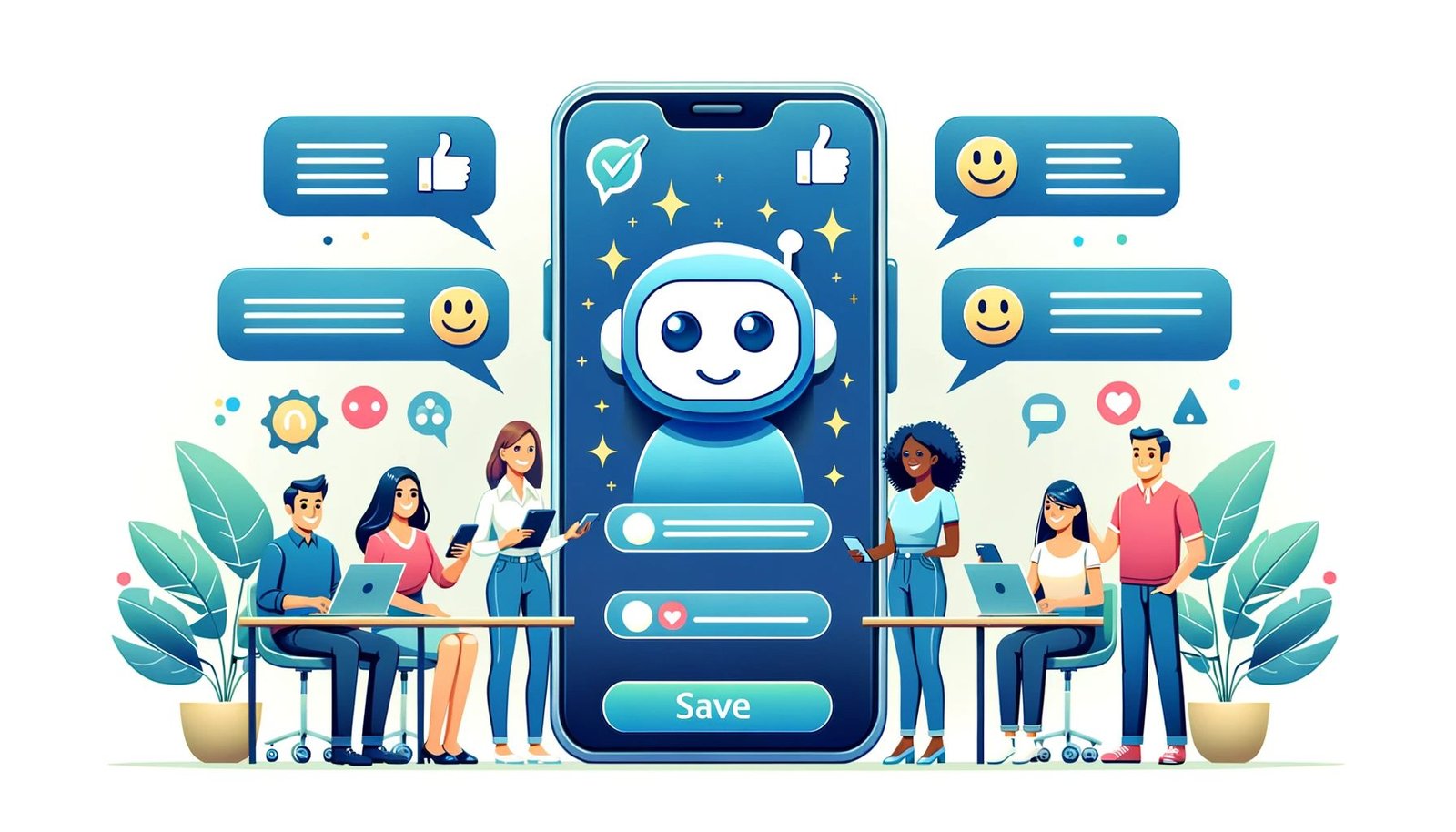
Conclusion
In today’s digital age, where customer expectations are constantly evolving, businesses must stay ahead of the curve to ensure they deliver top-notch service. ChatGPT, with its AI-driven capabilities, offers a promising solution to many of the challenges faced in customer service. However, the true potential of such a tool can only be unlocked with effective monitoring.
By actively monitoring ChatGPT interactions, businesses can gain invaluable insights into customer needs, preferences, and pain points. This not only allows for the immediate resolution of issues but also paves the way for long-term improvements in the AI’s responses and overall functionality. Moreover, with the integration of tools like sentiment analysis and trend spotting, companies can proactively address concerns before they escalate, leading to enhanced customer satisfaction.
Furthermore, as we’ve explored, monitoring goes beyond just identifying problems. It’s about understanding customer behavior, predicting future needs, and continuously refining the AI to ensure it aligns with business goals and customer expectations.
In essence, while ChatGPT offers a powerful platform for customer interactions, its true strength lies in the feedback it receives. As the adage goes, “What gets measured gets managed.” Businesses that prioritize and invest in robust ChatGPT monitoring will undoubtedly reap the benefits of improved customer satisfaction, loyalty, and, ultimately, business growth.
So, to all businesses out there: Embrace the future of customer service with ChatGPT, but remember, the key to success lies in listening, understanding, and acting on the feedback you receive. Your customers, and your bottom line, will thank you for it.
Dear readers, as we journey through the exciting realm of AI-driven customer service, your experiences and insights are invaluable. Have you interacted with ChatGPT or any other AI chatbot? What were your takeaways? We invite you to share your stories, feedback, and suggestions. Your firsthand experiences can guide improvements and shape the future of AI in customer service.
To the businesses reading this: The digital landscape is ever-evolving, and staying ahead requires not just adopting the latest technologies but also understanding how to optimize them. As highlighted throughout this guide, monitoring is the linchpin of successful AI-driven customer service. By adopting a monitoring-centric approach, you can ensure that your ChatGPT chatbot truly resonates with your customers, addressing their needs and exceeding their expectations.
So, dive in, explore the capabilities of ChatGPT, and remember to keep your ears to the ground. Listen to your customers, act on their feedback, and watch as your customer service transforms into a powerful tool for business growth. Start your ChatGPT journey today and be a part of the AI revolution in customer service!
Additional Resources
For those eager to delve deeper into ChatGPT monitoring and optimize their AI-driven customer service, here are some invaluable resources:
- ChatGPT Official Documentation: A comprehensive guide to understanding and implementing ChatGPT in your customer service. Read more.
- Monitoring Tools for Chatbots: An article that explores various tools and platforms ideal for monitoring chatbot interactions. Explore the tools.
- Best Practices for AI Chatbot Monitoring: A detailed guide on Fiverr that offers insights into optimizing chatbot interactions and ensuring customer satisfaction.
- ChatGPT Community Forum: Engage with a community of ChatGPT users, share experiences, ask questions, and get answers. Join the discussion.
- Advanced ChatGPT Monitoring Techniques: A course that delves into the intricacies of monitoring and optimizing ChatGPT for businesses. Enroll now.
These resources are just the tip of the iceberg. As AI and chatbot technology continue to evolve, it’s crucial to stay updated with the latest trends, tools, and best practices. Regularly revisiting these resources and participating in community discussions can ensure that your ChatGPT chatbot remains a valuable asset in your customer service arsenal.
- Why is monitoring the performance of ChatGPT chatbot crucial for businesses?
- The significance of keeping an eye on chatbot interactions to ensure optimal customer service.
- How does ChatGPT chatbot impact customer satisfaction?
- An overview of the direct and indirect ways ChatGPT can influence user experience and satisfaction.
- What are the key performance indicators (KPIs) to track when monitoring ChatGPT?
- A list of essential metrics that can provide insights into the chatbot’s efficiency and effectiveness.
- How can I gather real-time feedback from customers during their interaction with ChatGPT?
- Techniques and tools to collect immediate feedback during or post-chatbot conversations.
- What are some common issues users face when interacting with ChatGPT, and how can they be addressed?
- Insights into frequent challenges and potential solutions to enhance user experience.
- How can I train ChatGPT to better align with my business’s customer service goals?
- Tips on customizing and refining ChatGPT’s responses to better serve specific business needs.
- Are there any tools or platforms that can help in monitoring ChatGPT’s performance?
- Recommendations on software and platforms that offer chatbot monitoring and analytics.
- How can I ensure that ChatGPT respects user privacy during interactions?
- Best practices to maintain user confidentiality and trust during chatbot conversations.
- What role does continuous training play in improving ChatGPT’s customer satisfaction rates?
- The importance of regular updates and training to keep the chatbot relevant and efficient.
- Can I integrate ChatGPT with other customer service tools to provide a seamless experience?
- Options for integrating ChatGPT with CRM systems, feedback tools, and other customer service platforms.

